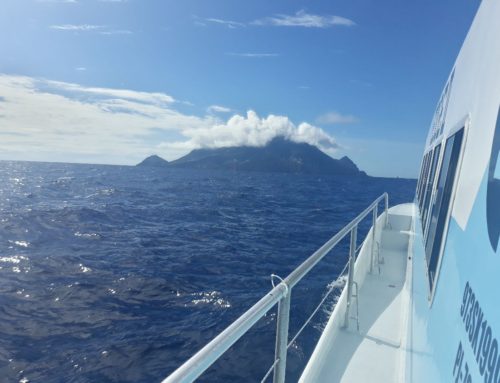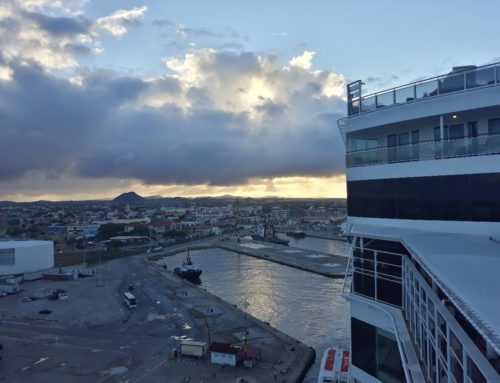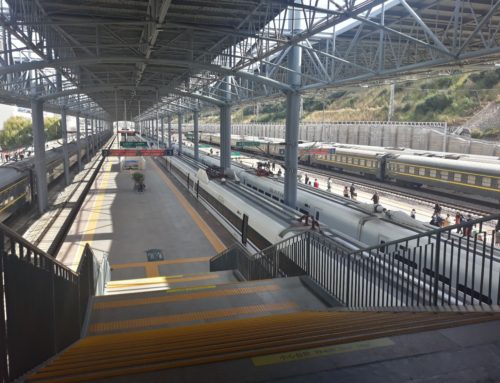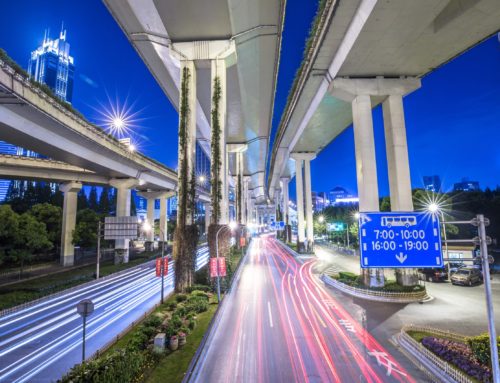Mountain regions always manage to make it on to my highlights list. No matter which country I travel through the spectacular views, incredible mountaintop temples and the rewarding hikes to get there provide some of the best memories and most remarkable stories. Hikers, climbers, adventurers, photographers, backpackers and tourists alike, we all head for the highlands.
But nature likes to make this difficult and you need to be prepared for the effects of high altitude. When not handled properly this can completely ruin your hike, your day or even your entire trip.

When to consider altitude
There is no fixed point at which everyone starts to feel the effect of altitude, it varies based on individual as well as fitness. A good general rule is as follows:
- Below 2500m (8202ft) – nobody should expect to be affected below this level except in exceptional circumstances
- 2500m – 3000m (8202ft – 9842ft) – the majority of people will not feel serious effects within this range but should start to consider it particularly if strenuous activities are planned
- 3000m – 5000m (9842ft – 16404ft) – everyone should be taking altitude into serious consideration at this level unless you were born at high altitude and are fully acclimatised. The effects will vary between people but all will get more severe the higher you go. Acclimatisation is vital and intense exercise needs to be either avoided or carefully prepared for.
- 5000m (16404ft) and higher – nobody should be considering a trip to this altitude without serious preparation and acclimatisation, especially if physical activities are involved. Since the highest I’ve been to up until now is 5248m and I was not hiking there I can’t advise on the required preparation.
The Effects
This can vary slightly but the main symptoms are as follows:
- Severe headaches
- Dehydration
- Dizziness
- Tiredness – but huge difficulty sleeping
- Vomitting – if you are at this level then my policy is to descend as soon as possible, you are unlikely to acclimatise from this point
One final effect is that the constant headaches and lack of sleep can easily have effect on morale. In Tibet we called this “Attitude Sickness”. Don’t expect to be your best self the whole time until acclimatised, and don’t judge anyone else for the same.

What Not To Do (based on my previous mistakes)
Several of my trips to high altitude regions were not planned sensibly at all. This was not enjoyable but at least means I can advise you all on what you definitely should not do!
1. Don’t go up quickly – once you are over 3000m you should not move higher too fast. This means that if you slept at 3000 one night you should try to sleep no higher than 3300 the next. Do not take a 6 hour bus from Kangding at 2500m to Litang at 4000m. Seriously, the headache will be very unpleasant and will ruin your evening!
2. Don’t hike at your usual pace – you have hopefully come up this far to go hiking but you should expect it to be much tougher than usual, regardless of your level of fitness. The low oxygen means that you will very rapidly feel the effects of pushing yourself too hard and it will take you longer than normal to recover. Do not start up the first slope at 4400m at the pace of your usual hiking playlist. The headrush was incredible and took a 15 minute rest before I could stand up again without feeling dizzy.


3. Don’t get too cold – cold will worsen the effects of altitude significantly. It is not even advisable to wash your head or hair while taking a shower at altitude as your head will get much colder when you are out. Make sure you have proper equipment for hiking as well. Do not go hiking in a blizzard up to 4000m unequipped and…. actually there were just so many “things not to do” on that hike that I need to write it as a separate story. Just be properly equipped, trust me!
4. Don’t drink alcohol – yeah I didn’t appreciate this advice either but it is important. The impact of what you drink will be far greater at altitude and the resulting dehydration will make the altitude sickness much worse. Thankfully once you have acclimatised sufficiently (leave it at least a week) then you can get away with it, with care! Do not drink beer when relaxing by a lake after a long days driving at 3900m in the hope it will make your worsening headache go away. It doesn’t, let’s just leave it at that! Oh also… Do not drink a shot of vodka at 4655m at the top of the highest pass to celebrate. This was not me, I promise, I was driving, this was my passenger. Definitely didn’t make for a good celebration though.


5. Don’t stay in noisy hostels – obviously I do exactly this, just like I do everywhere that I go but my point is that sleep is going to be an issue while at altitude. Most people find that they sleep little and wake often due to the shortness of breath until fully acclimatised. Personally, with my history of sleep problems, I barely got more than a couple of hours on any night despite the long days of hiking. Don’t let a small stray dog stay out in the cold outside your window all night barking. The only thing guaranteed to make the lack of oxygen worse, constant but irregular barking. It was -15°C and the poor thing just wanted to curl up on one of the electric blankets. This example can easily be replaced with snorers though which is much less adorable
6. Do not fly to a high altitude – I have never done this, my normal travelling style is to minimise how many places I fly over rather than travel through. But for destinations like Lhasa and Daocheng many tourists arrive by plane meaning they jump straight to well over 3000m, often from near sea level. This is the exact opposite of acclimatising and means you will have to be extremely careful for the first few days or heavily reliant on oxygen (see below). If travelling to Tibet I recommend taking the train, much cheaper and better for acclimatisation.


What You Should Do
Hopefully you enjoyed working out just how poor my preparation and decision making has been at altitude in the past. You can try to avoid those mistakes by doing the following;
- Plan your trip carefully – find towns and stopping points within around 300m of each other in altitude so you can ascend gradually. Plan to stay in each place for a few days to acclimatise better, and just to enjoy the area. Stay longer if you need to then to a larger height gain to the next town.
- Do several short hikes to acclimatise and work out your pace for the altitude – the more small gentle hikes you do the better you will acclimatise and it allows you to work out what pace you can manage on gentle walks before doing anything more intense. If you are planning to travel on to an even higher area then it is advisable to hike and to hike up to that new level before returning down to sleep. For example you stay in a town at 3500m and hike up to 3900m and back down to sleep before travelling on to a town at 3800m. I understand this is essential for very high altitude climbing
- Drink lots of water – whatever you drink normally, double it and then drink aim higher. Staying fully hydrated will help abate the symptoms and hopefully keep you from drinking anything carbonated or worse alcoholic
- Use sunglasses and sun visors – sunlight is much more intense at altitude, especially if there is snow or ice around on the mountains. This can dramatically worsen the headaches already caused by the lack of oxygen. You should also avoid screens and any other things that normally give you a headache
- Bring lots of sunscreen – the intense sunlight also burns you quickly. This isn’t to do with altitude sickness but will certainly make your life more uncomfortable
Other Strageties
The preparation above can and should be done by everyone but there are lots of other strategies that people choose to use. I generally find the above methods sufficient and try to avoid relying on these:
- Medication – ibuprofen or equivalent for the headache, sleeping tablets, even supposedly the benefits of viagra (I have never tested). Any of these and many more can abate the symptoms but will not help you acclimatise any faster. Unless you stock up heavily you will use up what you have very quickly. I have used ibuprofen to reduce a bad headache to enable me to sleep but that’s all.
- Oxygen cannisters – the problem with your body is lack of oxygen so… These definitely work but are extremely awkward, you would need an impossibly large number of canisters for an extended trip. Some areas will sell them but they are generally not cheap.
- Oxygen pumps – another option is an oxygen pump which you carry with you and wear tubes to your nose to supply what you need. Expensive, awkward, noisy, personally I cannot think of many things I’d want less on a beautiful mountain hike.


The Chinese Way
As with many things altitude is handled differently in China. Even if that wasn’t the main focus of this website it would still be worth a mention:
- Fly in to high altitude
- Have an oxygen canister provided straight off the flight
- Join your tour. The coach will be loaded with all the oxygen canisters you could ever need
- Stay in a hotel which pumps oxygen in to get close to normal levels
- Use cannisters or pumps whenever you are travelling to sites on the bus
- Go for short walk around site before returning to the bus. If hiking is involved bring oxygen with you
- Leave the area within 2 days, sometimes less
It shouldn’t be necessary to explain why this plan is totally alien to me! It is very surreal to hike past a gauntlet of Chinese puffing on their cannisters, or to sit in a coach and feel lightheaded because of how much extra oxygen is being released all around you! If you genuinely want to go to for a hike at 4700m on a 2 day trip this may well be the best way to do it. But why would you ever plan a trip like that?
Last Updated: January 2020
Sign up below for email notifications of my monthly updates, and for the best stories, guides and information from my travels.
Please help me keep this website as accurate and helpful as possible
One of the biggest problem I have found with online travel information is that it becomes obsolete very quickly. If you have read anything here that you think may be incorrect, incomplete or out of date then please send me a message using the Contact page or leave a comment below.
Also I would be delighted if anyone is able to send in further tips and logisitcal information that I can add to this page to make it as helpful as possible. Thanks everyone!







Leave A Comment